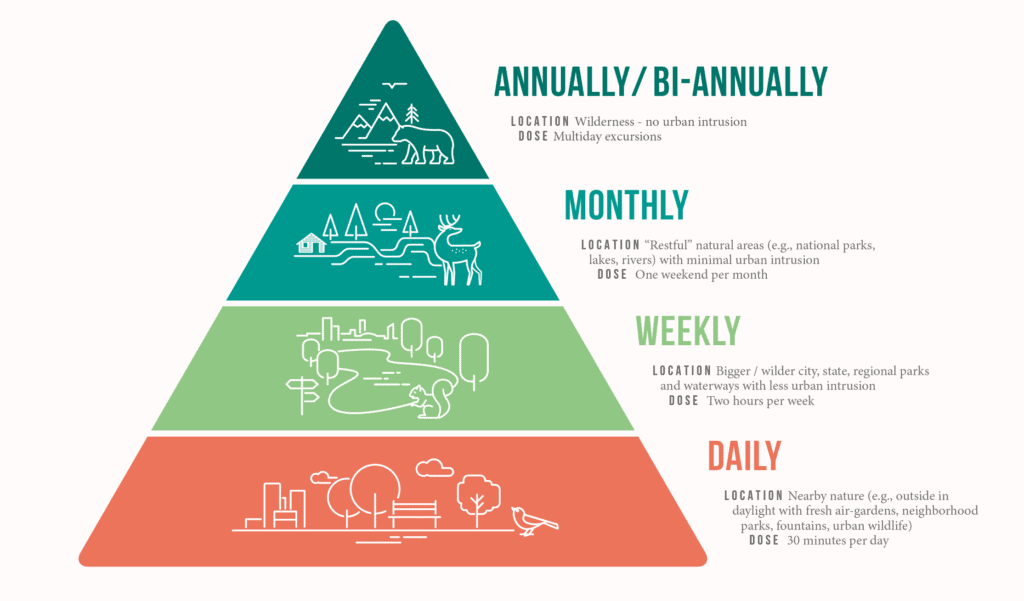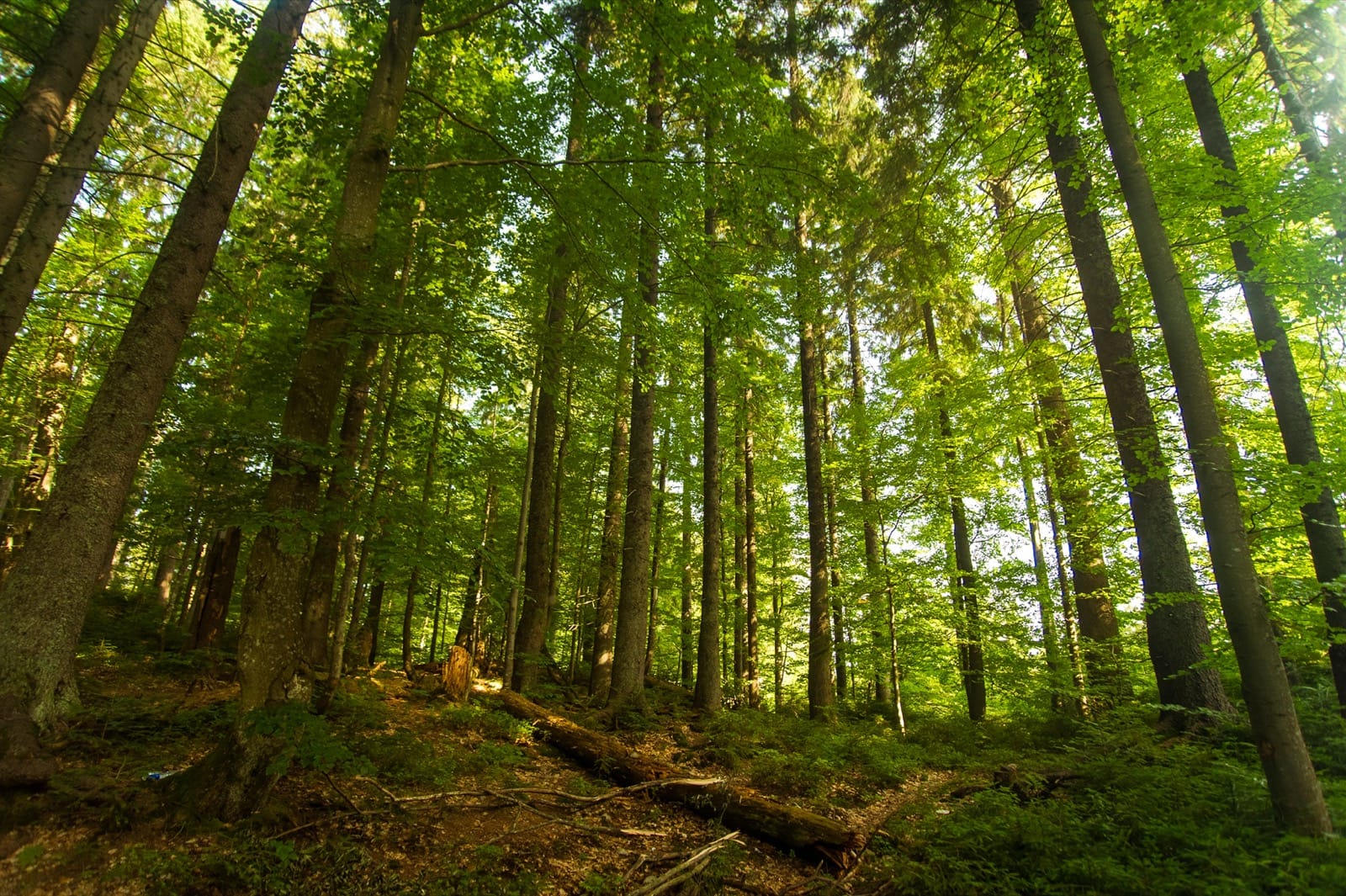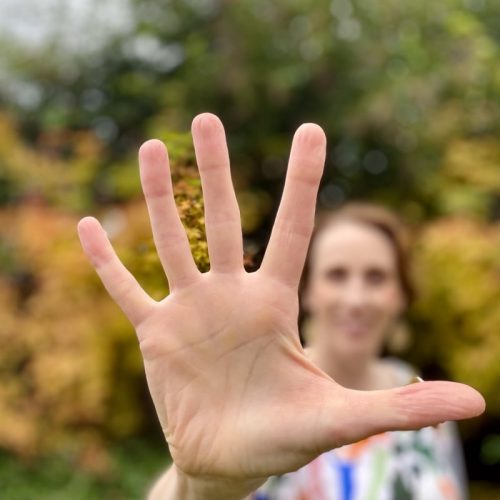When I first left the hospital after my mastectomy, I remember being acutely aware of the warm sun on my face in a way I had never experienced it before, and feeling so grateful to be alive, and to experience the simple beauty of nature again. I knew I’d been given a second chance, that I needed to heal myself, and then reduce my exposure to whatever had made me sick. What I didn’t realise at that moment was the role that nature could play in my recovery…
Being healthy no longer simply means just freedom from disease.[i] Rather being healthy is relative to each individual, and is a process related to the way we live. Prior to being diagnosed with breast cancer I thought I was the “healthiest” I had been for years. But stress was a constant in my life, and relaxation and exercise didn’t feature on my extensive ‘To-Do’ list.
Even though just over 50% of the world’s population live in urban areas (a figure that is expected to reach two-thirds by 2050), our physiological functions are still adapted to living in nature. [ii] The body’s sympathetic (‘fight or flight’) and parasympathetic (‘rest and digest’) nervous systems are designed to work in unison to promote a healthy balance between activation and relaxation. The sympathetic nervous system reacts strongly to stress and can be in a constant state of overload, especially if there are limited opportunities to regulate it. Modern life is full of stimuli (including smart phones and other forms of technology) that can trigger the sympathetic nervous system, and there can be a shortage of opportunities to relax (sound familiar?). When our bodies remain in this hyper/chronically stressed state for too long, illness can develop. Chronic stress can have a big impact on our health, so to reduce our risk it’s important to know ways to mitigate its impact. This is where nature comes in. Natural environments can provide an antidote to stress, for preventative and restorative health. They can directly promote relaxation and calm overstimulation from artificial and urban environments.[iii] Nature also works indirectly – through facilitating social contact and encouraging exercise and movement.
There is growing research that demonstrates that as long as people feel safe, nature has robust effects on our health — physically, mentally, and emotionally.[iv] While not the usual prescription your doctor is likely to write, nature is medicinal and ‘nature prescriptions’ are now being recognised by health professionals as “a viable, low-risk way to encourage people to be more physically active, to socialise in their community and to boost their wellbeing.”[v]
Studies show as little as 15 mins spent in nature can slow your heart rate, decrease your blood pressure, lower the levels of cortisol (a stress hormone) in your brain, enhance immune system function, increase self-esteem, reduce anxiety, and improve mood.[vi] And the good news is that you don’t need to venture far to access these health benefits.

The Pyramid (Figure 1) indicates optimal “doses” of nature. From daily micro-doses that can range from exposure to daylight and plant life multiple times per day, to annual multi-day excursions into wilderness areas where you can disconnect from technology, the Pyramid offers recommendations for duration as well as location of nature contact.
Recommended Doses:
- DAILY: 30 mins in nearby nature – neighbourhood parks, backyards.
- WEEKLY: 2 hours – city, state and regional parks and waterways.
- MONTHLY: One weekend per month – “restful” natural environments such as national parks, lakes, rivers.
- YEARLY: Excursions over multiple days – Wilderness with no urban intrusion.
It may not be possible to travel long distances regularly for deeper and enriching experiences. But research shows that the effects are the same whether you experience your nature time in small doses throughout the week or condense it all into a weekend.[viii]
The pyramid provides you with choices, so you can see how different exposure to, and immersion in, nature boosts your health and wellbeing. Florence Williams, author of The Nature Fix[ix], recommends we find the places that bring us joy and go there – “Pay attention to where you feel fantastic, pay attention to the landscapes and elements of nature that really sing to you.” And always, only go to places you feel comfortable and safe.
Finding green space and time to enjoy nature.
There is growing awareness about the vital link between our health and the health of our planet. While not everyone has access to natural forests, nature has an important role to play in helping to make urban areas healthy, sustainable, and attractive places to live and work in. So how do you gain the beneficial effects of time in nature if you live in cities and urban areas? As governments and policy makers have embraced the nature-health benefits research evidence, there has been an expansion of green areas in cities. There has been an increasing focus on bringing nature into people’s everyday lives, by designing and planning urban areas that makes nature more accessible. Cities have added or enhanced parks, and schools have been designed with large windows and access to trees and green space. In the US, there is a 10 Minute Walk campaign, that focuses on ensuring that everyone has access (within a 10 minute walk from home) to safe, quality parks or green spaces by 2050.[x] In my home state of Victoria, Australia, a government agency (Parks Victoria) has developed the Healthy Parks, Healthy People evidence-based framework, which supports the fundamental connection between the health of our environment and the health and wellbeing benefits of spending time in nature. Now a global movement, this framework is encouraging communities all over the world to embrace the healing power of nature, as a preventative and restorative tool for our health and wellbeing.
So what if you’re just too busy, or unable, to get out and experience the stress-relieving benefits of nature? The reality for many people (especially during the current pandemic!) is that getting outside each day isn’t as attainable or as easy as it sounds. But there’s STILL ways to benefit from nature while indoors. Many elements of nature have the same beneficial effects as being out in green space.[xi]
For Us and Earth tips:
- (If you like it), introduce wood into your home/workplace – looking, touching and smelling untreated wood objects can offer relaxation benefits[xii];
- Try to surround yourself with ornamental houseplants (if you have pets be sure to check for toxicity) or grow them and/or herbs/vegies on your balcony/windowsill. These also have benefits for indoor air quality;
- Buy a cheap bunch of supermarket flowers that bring you joy, and place them somewhere you can see them at home or work;
- Choose an essential oil you like and use it around your home – diffuse it in water; add a few drops to a load of laundry; or a warm bath; or mix with water in a spray bottle and mist over furniture, carpets or linen. If you like them, use tree-derived essential oils like cedarwood, cypress, tea-tree, eucalyptus or Siberian fir;
- Try listening to nature sounds or downloading a birdsong app;
- If possible, try opening a window for fresh air and listening for birds;
- Work next to, or near a window/natural light and take quick breaks to look up at the clouds;
- Make time to catch the sunset (or sunrise!);
- Watch a nature program/clip (if this interests you); and
- Find nature pictures for wallpapers or screensavers for your computer at home and work.
The health benefits of nature represent the strongest argument we can make for nature itself. Research findings on the benefits of immersion in nature beautifully illustrate the interconnection between our health and the health of the world around us. And in demonstrating this, it has a positive effect on nature and the planet itself. By connecting with nature, and gaining enjoyment and health benefits from it, our desire to protect our surroundings, and reduce our negative impacts on it, grows. Science gives us an understanding of how we can (and why we MUST) look after the Earth.
Yours in Health,
Carolyn
[i] Miyazaki, Y. (2018) Shinrin-yoku: The Japanese Way of Forest Bathing for Health and Relaxation. Aster (Octopus Publishing Group).
[ii] Miyazaki, Y. (2018) Shinrin-yoku: The Japanese Way of Forest Bathing for Health and Relaxation. Aster (Octopus Publishing Group).
[iii] Miyazaki, Y. (2018) Shinrin-yoku: The Japanese Way of Forest Bathing for Health and Relaxation. Aster (Octopus Publishing Group).
[iv] https://e360.yale.edu/features/ecopsychology-how-immersion-in-nature-benefits-your-health
[v] Healthy Parks Healthy People
[vi] Williams, F. (2017) The Nature Fix: Why Nature Makes Us Happier, Healthier, and More Creative. W.W. Norton & Company.
[vii] The SHIFT Rx Challenge Pyramid was informed by Florence Williams’ research in her book The Nature Fix, as well as Tanya Denkla-Cobb/the Biophilic Cities Project’s “Nature Pyramid.”
[ix] Williams, F. (2017) The Nature Fix: Why Nature Makes Us Happier, Healthier, and More Creative. W.W. Norton & Company.
[xi] Miyazaki, Y. (2018) Shinrin-yoku: The Japanese Way of Forest Bathing for Health and Relaxation. Aster (Octopus Publishing Group).
[xii] Miyazaki, Y. (2018) Shinrin-yoku: The Japanese Way of Forest Bathing for Health and Relaxation. Aster (Octopus Publishing Group).



Want to learn more about reducing your exposure to toxics in your everyday products, and other simple swaps for a healthier you & earth?
Sign up here and receive my free 5 Easy Ways to Reduce Toxics OR Join my mailing list and receive regular tips to lower your toxic load.